Bronze Age - Recent acquisitions - Sold antiquities
Archive of sold antiquities
All artefacts sold in our gallery are fully documented in our online archive and database. Being a specialist ancient art dealer, preserving also the more recent history of each and every piece sold in our shop is at our heart. That is particularly useful for artefacts that changed owners in the meantime. Information that may have been lost in the process can be easily restored from our archives. Please do not hesitate to contact us if you need further information about ancient items that have been sold in our gallery. We can help you with reconstructing the history of ownership for those items. All information about our customers will be kept confidential, of course.-
 Egyptian Scarab
Egyptian ScarabThe scarab amulet is made of steatite. It has a hieroglyphic inscription on the lower side, including a reference to Amun-Re.
Price: on request Early Elamite cylinder seal from a museum collection
Early Elamite cylinder seal from a museum collectionCompact seal with geometric design from Elam. 3rd Millenium BC.
Price: on request Babylonian carnelian cylinder seal
Babylonian carnelian cylinder sealPrime example made of beautiful orange carnelian. Highly detailed engraved scene with king offering to the weather god Hadad. First half of 2nd Millenium BC.
Price: on request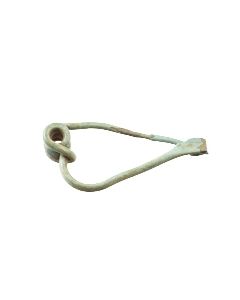 Early bow brooch of the Urnfield period
Early bow brooch of the Urnfield periodSimple fibula shape dating to the Late Bronze Age. Interesting mix of two-sided spiral spring and simple pin holder.
Price: on request Bronze Age axe head
Bronze Age axe headVery well preserved axe head. Late Bronze Age, 10th to 9th cent. BC.
Price: on request Bronze Age axe head
Bronze Age axe headVery well preserved axe head. Late Bronze Age, 10th to 9th cent. BC.
Price: on request Spear head from famous Guttmann collection
Spear head from famous Guttmann collectionMassive, perfectly preserved piece, beautiful patina. Inventory number "AG 167c" from famous Axel Guttmann collection in shaft.
Price: on request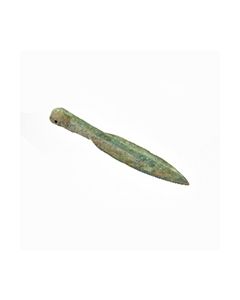 Spear head from famous Guttmann collection
Spear head from famous Guttmann collectionMassive, perfectly preserved piece, beautiful patina. Inventory number "AG 167c" from famous Axel Guttmann collection in shaft.
Price: on request Spear head from famous Guttmann collection
Spear head from famous Guttmann collectionMassive, perfectly preserved piece, beautiful patina. Inventory number "AG 167c" from famous Axel Guttmann collection in shaft.
Price: on request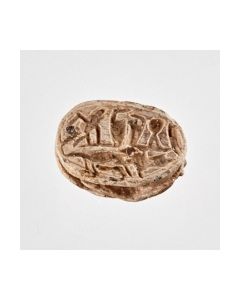 Scarab from the Ramesside period
Scarab from the Ramesside periodThe bottom side shows Horus, Uraeus and crocodile. The crocodile could be interpreted a the god Sobek.
Price: on request Scarab with spiral design and symbol for good luck
Scarab with spiral design and symbol for good luckThe Egyptian scarab from the Second Intermediate Period is decorated with a geometrical pattern. A nefer hieroglyph stands for good luck.
Price: on request Scarab of pharao Seti I.
Scarab of pharao Seti I.The Egyptian scarab bears a hieroglyphic inscription which can be read as the name of pharao Seti I. From the Ramesside period, around 1300 BC.
Price: on request Scarab with sphinx and Maat
Scarab with sphinx and MaatThe piece from the Ramesside period shows the goddess of truth and justice. Next to her is a name, probably that of pharao Mencheperre, who is famous as Thutmosis III.
Price: on request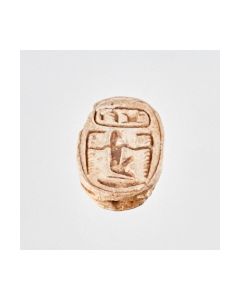 Scarab with god Heh and cartouche
Scarab with god Heh and cartoucheInteresting motive showing the kneeling god of endlessness with palm stem in both hands. Above him the cartouche of pharao Mencheperre. Around the 18th dynasty of ancient Egypt.
Price: on request Scarab with cross symbol
Scarab with cross symbolA piece from the Ramesside Period to the early Third Intermediate Period of ancient Egypt. Great early 20th century provenance.
Price: on request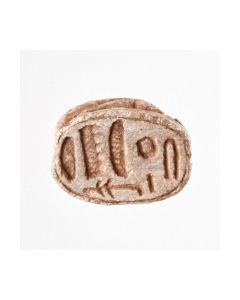 Scarab with inscription
Scarab with inscriptionThe lower side bears a hieroglyph inscription. Nice piece from the Freemark collection. New Kingdom.
Price: on request Ramesside Scarab
Ramesside ScarabEgyptian scarab from the 19th to 20th dynasty. With horse and hieroglyphs.
Price: on request Cup of the Urnfield culture
Cup of the Urnfield cultureCeramic vessel dating to the transition period between Bronze Age and Iron Age in Central Europe. 1200 to 800 BC. Found in an urnfield in Austria.
Price: on request Big Cup of the Urnfield culture
Big Cup of the Urnfield cultureCeramic vessel dating to the transition period between Bronze Age and Iron Age in Central Europe. 1200 to 800 BC. Found in an urnfield in Austria.
Price: on request Egyptian fingerring from the Amarna period
Egyptian fingerring from the Amarna periodMade of colourful turquoise fayence. Two fully modelled crocodiles adorn the plate. Perfect preservation including original black paint.
Price: on request Sumerian cuneiform clay tablet
Sumerian cuneiform clay tabletSmall tablet with drill hole. Cuneiform receipt for bricks or pottery. Very well preserved piece from the late 3rd millenium BC.
Price: on request Clay tablet with cuneiform script
Clay tablet with cuneiform scriptSmall tablet with well preserved cuneiform engravings. Interesting Bronze Age document from Mesopotamia.
Price: on request Cuneiform tablet from Umma
Cuneiform tablet from UmmaRecord of beer and bread rations for laborers. Probably from the Bronze Age city of Umma. The cuneiform tablet was studied and conserved at Yale University.
Price: on request Scarab with scarab motive
Scarab with scarab motiveThe stamp side shows a scarab with two uraeus snakes. This scarab is described in the catalogue of Irène Gautier-Vodoz.
Price: on request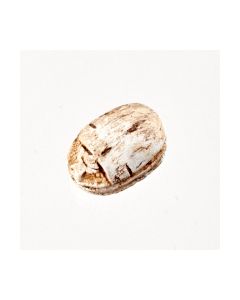 Scarab with lotus motive
Scarab with lotus motiveAncient Egyptian amulet seal with beautiful motive. Six lotus flowers are forming volutes. This scarab is described in the catalogue of Irène Gautier-Vodoz.
Price: on request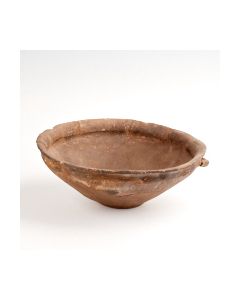 Big bowl from the Urnfield period
Big bowl from the Urnfield periodCeramic vessel dating to the transition period between Bronze Age and Iron Age in Central Europe. 1200 to 800 BC. Found in an urnfield in Lower Austria.
Price: on request Juglet from the Urnfield period
Juglet from the Urnfield periodSmall juglet dating to the transition period between Bronze Age and Iron Age in Central Europe. 1200 to 800 BC. Found in an urnfield in Lower Austria.
Price: on request Cup of the Urnfield culture
Cup of the Urnfield cultureCeramic vessel dating to the transition period between Bronze Age and Iron Age in Central Europe. 1200 to 800 BC. Found in an urnfield in Austria.
Price: on request Akkadian cylinder seal of shell core
Akkadian cylinder seal of shell coreTwo lions are fighting with two buffalos. The balance and detail of the scene is an impressive demonstration of the Akkadian seal engraver's skill. Old Akkadian, around 2300 BC.
Price: on request Mesopotamian cylinder seal with fighting scene
Mesopotamian cylinder seal with fighting sceneThe scene shows a fight between hero and lion with animals. Early Dynastic Period III, around 2500 BC.
Price: on request Mesopotamian cylinder seal with abstract scene
Mesopotamian cylinder seal with abstract sceneThe milky white stone is engraved with a scene that stands out by its high degree of abstraction. Late Uruk to Djemdet Nasr period, around 3000 BC.
Price: on request Egyptian faience ring showing Bes and Taweret
Egyptian faience ring showing Bes and TaweretThe finger ring with its scene on the plate must have served a protective function for an expectant mother. New Kingdom, approx. 1550 to 1070 BC.
Price: on request Egyptian scarab with papyrus plants
Egyptian scarab with papyrus plantsScarab amulet made of bright, almost white steatite. 13th to 15th dynasty. This scarab is described in the catalogue of Irène Gautier-Vodoz.
Price: on request Scarab with sphinx
Scarab with sphinxThe stamp depicts a sphinx with pharaoh headcloth walking towards the Ankh symbol of life. The amulet should exert a protective function on the one carrying or owning it.
Price: on request Scarab with two cartouches of Thutmose III.
Scarab with two cartouches of Thutmose III.Interesting amulet from the New Kingdom or a later period made in archaic style. This scarab is described in the catalogue of Irène Gautier-Vodoz.
Price: on request


